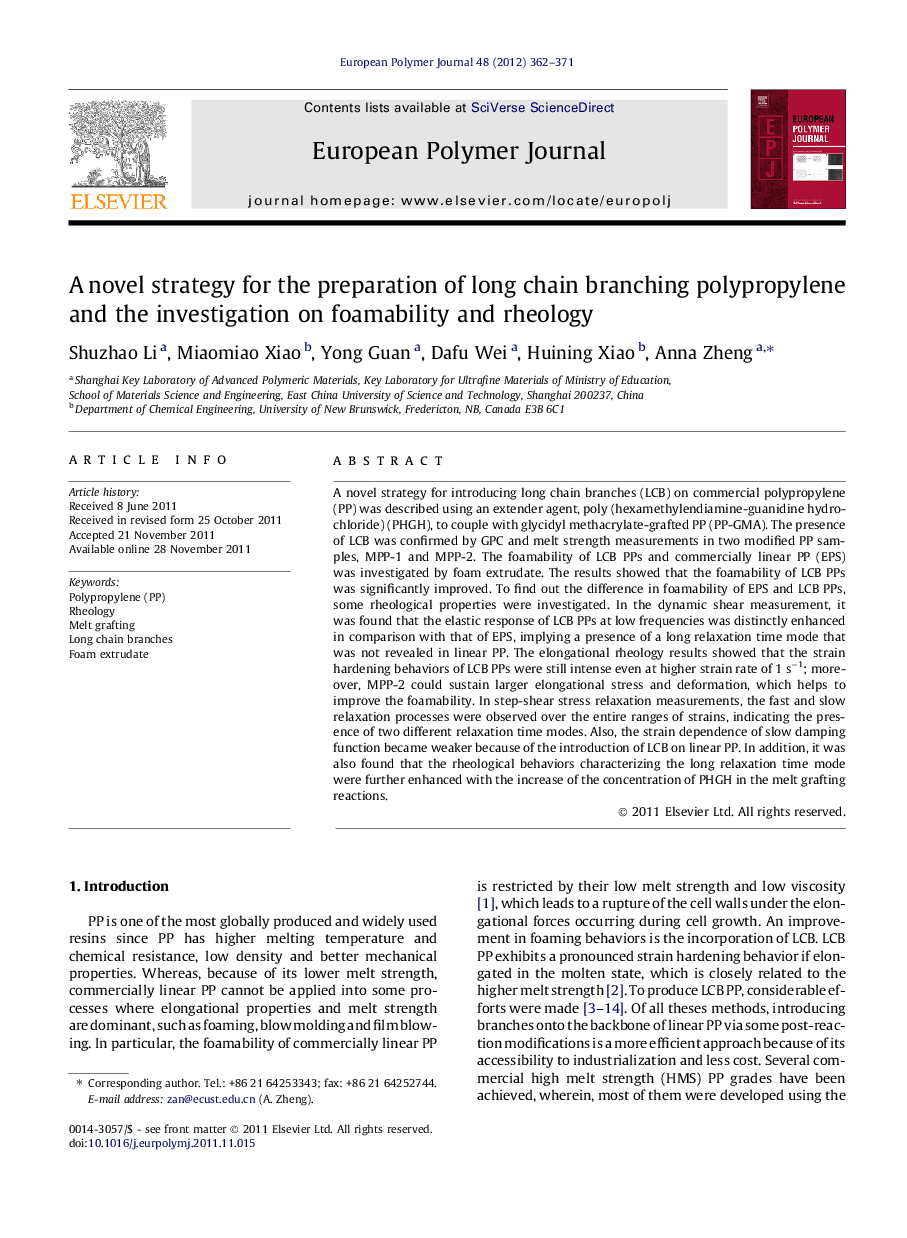| Article ID | Journal | Published Year | Pages | File Type |
|---|---|---|---|---|
| 1399820 | European Polymer Journal | 2012 | 10 Pages |
A novel strategy for introducing long chain branches (LCB) on commercial polypropylene (PP) was described using an extender agent, poly (hexamethylendiamine-guanidine hydrochloride) (PHGH), to couple with glycidyl methacrylate-grafted PP (PP-GMA). The presence of LCB was confirmed by GPC and melt strength measurements in two modified PP samples, MPP-1 and MPP-2. The foamability of LCB PPs and commercially linear PP (EPS) was investigated by foam extrudate. The results showed that the foamability of LCB PPs was significantly improved. To find out the difference in foamability of EPS and LCB PPs, some rheological properties were investigated. In the dynamic shear measurement, it was found that the elastic response of LCB PPs at low frequencies was distinctly enhanced in comparison with that of EPS, implying a presence of a long relaxation time mode that was not revealed in linear PP. The elongational rheology results showed that the strain hardening behaviors of LCB PPs were still intense even at higher strain rate of 1 s−1; moreover, MPP-2 could sustain larger elongational stress and deformation, which helps to improve the foamability. In step-shear stress relaxation measurements, the fast and slow relaxation processes were observed over the entire ranges of strains, indicating the presence of two different relaxation time modes. Also, the strain dependence of slow damping function became weaker because of the introduction of LCB on linear PP. In addition, it was also found that the rheological behaviors characterizing the long relaxation time mode were further enhanced with the increase of the concentration of PHGH in the melt grafting reactions.
Graphical abstractFigure optionsDownload full-size imageDownload as PowerPoint slide
